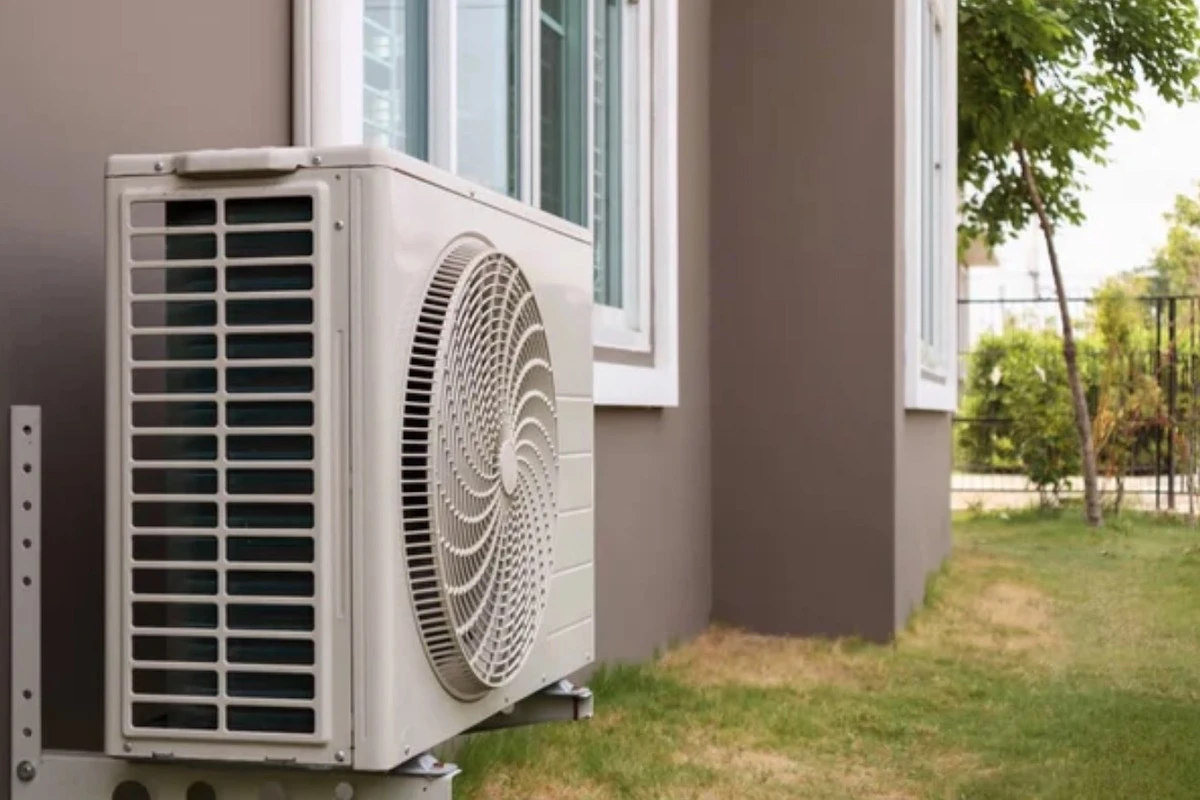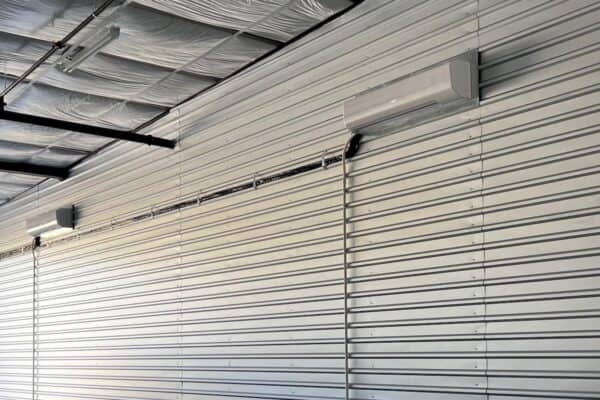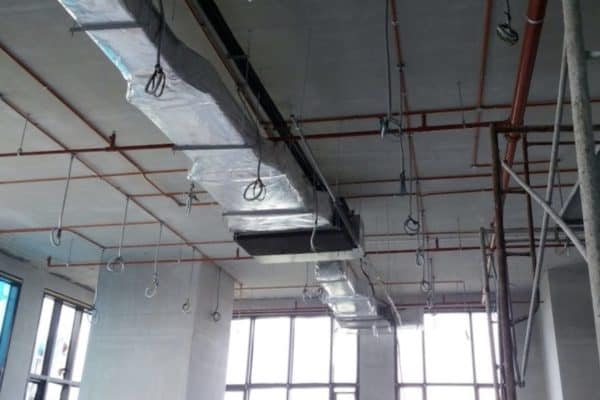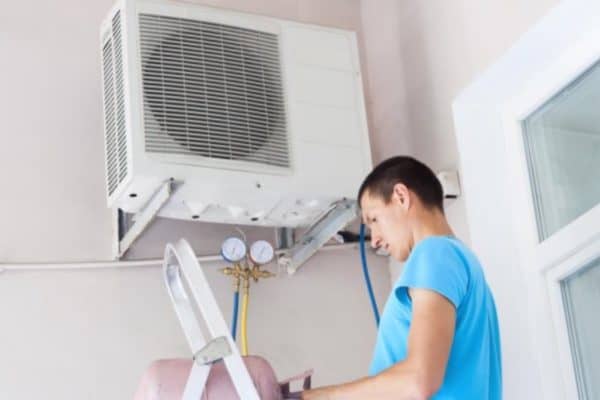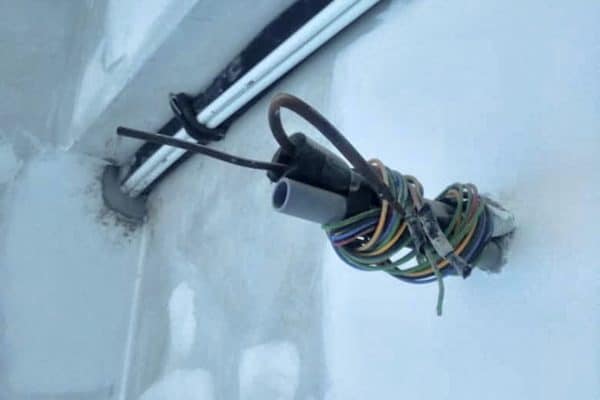Mini Split Wiki: History, Operation & Applications
Mini splits are a type of air conditioner that supplies either cooled air only, or cooled and heated air to a single or a few rooms of a building, with or without ducts, in a decentralized or centralized manner. Mini splits use electricity to transfer heat from a cool space to a warm space by transferring thermal energy using a refrigeration cycle, cooling the cool space and warming the warm space. A mini split that does heating and cooling is known as a heat pump while a mini split that does cooling only is known as an air conditioner.
In North America, mini splits are also known as ductless mini splits, ductless systems, ductless air conditioners or ductless heat pumps. In Europe, mini splits are known as wall-mounted air conditioners. In Asia, mini splits are known as split units, split air conditioners, split systems or direct expansion (DX) split units. Split air conditioners are called mini splits by the West to distinguish them from traditional central split systems.
History
The world’s first mini split was introduced in 1961 by Toshiba, a system where the indoor and outdoor units are only connected by copper piping. [1] Back then, it is known as split air conditioning unit and it didn’t look exactly like the mini split known today. In 1973, Daikin developed the multi-split type of air conditioner that is capable of connecting multiple indoor units to one outdoor unit. [2] It is then developed into the multi-zone mini split system known today.
Before the introduction of the world’s first inverter-based air conditioning unit by Toshiba in 1981, mini split compressors are fixed-speed. [1] Over the year, inverter technology has developed into what is known today as variable-speed compressors.
In 2012, Daikin released the world’s first R32 mini split “Urusara 7”. It uses R32 refrigerant developed by Daikin which has a lower impact on the environment and has better energy efficiency than R410A. [2] Driven by the Kigali amendment to the Montreal Protocol, R410A refrigerant will soon be phased out and R32 refrigerant is expected to be the primary replacement in mini splits.
Principle of Operation
According to the second law of thermodynamics, heat cannot spontaneously flow from a colder location to a hotter area; work is required to achieve this.[3] To cool a living space, a mini split requires work to move heat from indoor to outdoor and it does so using the vapor-compression refrigeration cycle.
The main components of a mini split consist of two heat exchangers known as the evaporator and the condenser. These heat exchangers are typically finned-tube heat exchangers, though some may use micro-channel heat exchangers. In addition to the heat exchangers, a mini split has a compressor, typically a scroll type, and an expansion device, typically an electronic type.
A mini split operating in cooling mode starts the vapor-compression refrigeration cycle when the refrigerant enters the compressor as low-pressure low-temperature vapor. Then, the compressor increases the pressure of the refrigerant and the refrigerant leaves the compressor as high-pressure high-temperature superheated gas. Subsequently, the hot pressurized refrigerant gas passes through the condenser where it is cooled by the surrounding air, aided by the condenser fan. During this process, the gas refrigerant condenses into a liquid and gas mixture. This refrigerant mixture then passes through the expansion device which reduces the pressure rapidly, causing the temperature to drop drastically as well. Afterward, the cold refrigerant mixture passes through the evaporator where it absorbs heat as the evaporator fan circulates the air through the coil. After absorbing the heat, the refrigerant leaves the evaporator and goes back to the compressor as low-pressure low-temperature vapor and the cycle repeats. In heating mode, a reversing valve engages and the refrigeration cycle runs in reverse, supplying warm air and rejecting cold air.
Standard
The performance of mini splits is rated by the Air Conditioning, Heating, and Refrigeration Institute (AHRI). Every AHRI-certified mini split receives a certification from AHRI and has a certification number recorded on AHRI Directory. The AHRI tests and rates the cooling capacity, heating capacity and efficiency of a mini split based on the AHRI indoor and outdoor conditions.
AHRI conditions for cooling:
- Indoor conditions: 80°F DB, 67°F WB [26.7°C DB, 19.4°C WB]
- Outdoor conditions: 95°F DB, 75°F WB [35°C DB, 24°C WB]
AHRI conditions for heating:
- Indoor conditions: 70°F DB, 60°F WB [21.1°C DB, 15.6°C WB]
- Outdoor conditions: 47°F DB, 43°F WB [8.3°C DB, 6.1°C WB]
- Outdoor conditions: 17°F DB, 15°F WB [-8.3°C DB, -9.4°C WB]
Operating Range
Mini splits typically operate between 5°F [-15°C] and 115°F [46.1°C]. In cooling mode, mini splits may stop working if the outdoor temperature falls below 14°F [-15°C] or exceeds 115°F [46.1°C]. In heating mode, mini splits may stop working if the outdoor temperature falls below 5°F [-15°C] or exceeds 75°F [24°C].
Cold Climate
Main article: Mini Splits in Cold Weather.
Mini splits designed for cold climates can operate down to -13°F [-25°C] in heating mode. However, their heating efficiency reduces with the outdoor temperature.
System
Mini splits can be configured in a single-zone manner or a multi-zone manner. Single-zone mini splits are also known as single-split air conditioners and multi-zone mini splits are also known as multi-split air conditioners.
Single Zone
In a single-zone system, the mini split has one indoor unit connecting to one outdoor unit. The indoor unit is connected to the outdoor unit by a pair of refrigerant tubes. When the indoor unit is turned on, a signal is sent to the outdoor unit to start the operation.
Multiple Zone

In a multi-zone system, the mini split has multiple indoor units connecting to one outdoor unit. Typically, the minimum number of indoor units is 2 and the maximum number of indoor units is 5. However, with a Branch Box, the maximum number of indoor units can go up to 8. The indoor units are connected to the outdoor unit individually by a pair of refrigerant tubes as opposed to a combined pair of refrigerant tubes in a VRF system. However, the refrigerant tubes from all indoor units are jointed at the outdoor unit. Thus, a refrigerant leak in one of the pairs may deplete the refrigerant in other pairs.
The outdoor unit of the multi-zone system shares its capacity with the connected indoor units. However, the sum of the capacity of the connected indoor units can exceed the capacity of the outdoor unit due to diversity factor. When applied correctly, the size of the multi-zone system can be reduced.
Type
Main article: 5 Types of Mini Split Indoor Units.
The outdoor unit of single-zone and multi-zone mini splits can be connected to different types of indoor units. Each type of mini split indoor unit has its unique characteristics.
Wall Mounted
Wall-mounted mini splits are a type of mini split in which the indoor unit is mounted on the wall at about 7-9 feet above the floor. A wall-mounted mini split is typically rectangular in shape. Its body is made of plastic, typically finished in white color. In a wall-mounted mini split, the air is typically returned from the top and supplied through the bottom opening at about 45°. The opening has a horizontal vent for vertical airflow direction control and multiple vertical vents for horizontal airflow direction control.
Wall-mounted mini splits are typically controlled by a remote controller. They have a washable filter located underneath the front cover of the indoor unit. The filter can be accessed by snapping open the front cover. Higher-end models may include more than one filter inside the indoor unit. A temperature sensor can be found inside the indoor unit of a wall-mounted mini split. It is typically located on the printed circuit board (PCB) of the indoor unit. Some mini splits use the remote controller as a thermostat for temperature control.
Ceiling Cassette
Ceiling cassette mini splits are a type of mini split in which the indoor unit is hung on the ceiling at the center of a room. A ceiling cassette mini split is typically square in shape. It has a front panel that is made of plastic, typically finished in white color. In a ceiling cassette mini split, the air is typically returned from the bottom, through the center of the front panel, and supplied through the 4 openings located on the front panel in 4 different directions (north, south, east & west). Each of the 4 openings has a horizontal vent that controls the direction of the supply airflow. Some ceiling cassette mini splits may have more openings for supply airflow at the corners of the front panel for better air distribution.
Ceiling cassette mini splits are typically controlled by a remote controller. They have a washable filter located on the front panel of the indoor unit. The filter can be accessed by snapping open the center portion of the front panel. A temperature sensor can be found inside the indoor unit of a ceiling cassette mini split. It is typically located on the printed circuit board (PCB) of the indoor unit. Ceiling cassette mini splits have a built-in condensate pump inside the indoor unit. The condensate pump operates to discharge the condensate water to the connected drain pipe. The drain pipe is typically raised at a height of about 1-2 feet to achieve the required gradient for gravity flow.
Ceiling Ducted
Related article: Ducted Mini Split Basics and Installation.
Ceiling ducted mini splits are a type of mini split that uses ductwork for air distribution. The indoor unit of a ceiling ducted mini split is installed above the ceiling. A ceiling cassette mini split is typically rectangular in shape and made of galvanized steel. In a ceiling ducted mini split, the air is typically returned from the back and supplied through the front opening. A supply air grille can either be mounted to the opening and supply air directly out the grille, or the opening can be attached to a duct and supply air to various supply air diffusers through the duct.
Ceiling ducted mini splits are typically controlled by a remote controller via a receiver. They have a washable filter located at the back of the indoor unit. The filter can be accessed by sliding out the frame that is holding the filter.
Floor Mounted
Floor-mounted mini splits are a type of mini split in which the indoor unit is mounted on the wall at a low level or a few inches above the floor. A floor-mounted mini split is typically square in shape with a thin body. Its body is made of plastic, typically finished in white color. In a floor-mounted mini split, the air is typically returned from the front panel and supplied through the opening on the top. The opening has a horizontal vent to control the direction of the supply airflow.
Floor-mounted mini splits are typically controlled by a remote controller. They have a washable filter located inside the front panel of the indoor unit. The filter can be accessed by snapping open the center portion of the front panel. Higher-end models may include more than one filter inside the indoor unit. A temperature sensor can be found inside the indoor unit of a floor-mounted mini split. It is typically located on the printed circuit board (PCB) of the indoor unit. Some floor-mounted mini splits can be installed near the ceiling and they are sometimes known as ceiling suspended mini splits.
Efficiency
Mini split heat pumps that earn the ENERGY STAR label are independently certified to save energy, save money, and protect the climate. Because they transfer rather than generate heat, ENERGY STAR certified mini splits use up to 60% less energy than standard home electric radiators.[4]
The efficiency of a mini split is measured in terms of Season Energy Efficiency Ratio (SEER) and Heating Seasonal Performance Factor (HSPF). A standard 9000 BTU wall-mounted mini split typically has a SEER value of 17-22 and an HSPF value of 10-12. As of May 2023, the most efficient mini split is the Carrier INFINITY 9000 BTU mini split heat pump, standing at SEER 42 and HSPF 15.
Mini splits have different efficiency depending on their design, type, system and capacity. Mini splits are generally categorized into entry-level, standard, high-efficiency and premium. Entry-level mini splits have the lowest efficiency (e.g.: SEER 16, HSPF 9) and premium mini splits have the highest efficiency (e.g.: SEER 26, HSPF 13). Wall-mounted mini splits are the most efficient while ceiling ducted mini splits are the least efficient. Single-zone mini splits are more efficient than multi-zone mini splits. Low-capacity mini splits are more efficient than high-capacity mini splits. Cold climate mini splits generally have high efficiency.
The efficiency of a multi-zone mini split is depending on the indoor unit. It is rated based on ductless, ducted and mixed indoor units. A multi-zone mini split system with ductless indoor units is the most efficient while a multi-zone mini split system with ducted indoor units is the least efficient.
Capacity
The capacity of mini splits is rated in terms of British Thermal Unit (BTU) per hour. In North America and Europe, the capacity of mini splits is rated in BTU (e.g.: 9000 BTU, 12000 BTU & 18000 BTU). In the Middle East, the capacity of mini splits is rated in Ton of refrigeration (e.g.: 0.75 Ton, 1 Tons & 1.5 Tons). In China, the capacity of mini splits is rated in horsepower (e.g.: 1 HP, 1.5 HP & 2 HP). In Australia, the capacity of mini splits is rated in kW, kilowatt (e.g.: 2.5 kW, 3.5 kW & 7.1 kW). In heating mode, the capacity of mini splits reduces with the outdoor temperature.
Noise
Mini splits are generally quiet. Typically, the indoor unit of a mini split operating at low fan speed produces only about 20-25 dB of noise. At maximum fan speed, the noise level is about 40-45 dB. The outdoor unit typically has a noise level of around 50-60 dB.
Features
Related article: Mini Split Remote Controller Symbols.
Mini splits typically have features including quiet, powerful, sleep and energy saving. The quiet feature in a mini split typically lowers the fan speed to the minimum to reduce noise. The powerful or turbo feature in a mini split automatically set the fan speed to the maximum and temperature to the lowest for a period of time for maximum cooling. The sleep mode in a mini split gradually raises the temperature setpoint to save energy. The energy saving or eco feature in a mini split typically limits the compressor power to save energy, or use a motion sensor to detect occupant and reduce cooling power to save energy when no occupant is detected.
Installation
The installation of a mini split involved the mounting of the indoor and outdoor units, flaring and brazing of copper tubes, connecting or concealing of a PVC drain pipe, insulating pipes, connecting wires, testing and commissioning. A qualified or certified HVAC technician or professional is generally needed for the installation.
Maintenance
Mini splits required periodical maintenance. The scope of the maintenance work includes filter cleaning, filter replacement, evaporator and condenser fins cleaning, fan cleaning, and bolts and nuts checking. Additionally, a chemical wash of the evaporator and condenser may be required when necessary. Check the refrigerant pressure once in a while and refill when necessary. If ductwork is involved, duct cleaning should be included.
Warranty
The warranty of a mini split typically is 5 years for the compressor and 1-2 years for the parts. Labor warranty may last from a week to a few months depending on the installer or contractor. Mini splits with a compressor size above 2.5 horsepower have a typical warranty period of 2 years only. Warranty may be voided for mini splits installed by non-certified personnel.
Incentives
Federal tax credits up to $2000 is provided to homeowners who purchased and installed any Energy Star certified mini split heat pumps between 1st January 2023 and 31st December 2032.[5]
Applications
Landed Residential Houses
Mini splits are used in landed houses such as single-family houses and 2-storey terrace houses. Multiple single-zone mini splits are usually found in the bedroom, living room, kitchen, garage and sunroom. Due to aesthetic reasons and space limitations, many landed houses use a multi-zone mini split system where individual indoor units in the bedroom, living room and kitchen are all connected to a single outdoor unit outside the house.
High-Rise Residential Apartments
Main article: Mini Splits for Apartments.
Mini splits are used in high-rise residential apartments, condominiums and flats. Due to space constraints, multi-zone mini split systems are more popular in apartments and condominiums. Individual indoor units can be found in the bedroom, living room and kitchen, and they are all connected to a single outdoor unit outside the house.
Office Buildings
Mini splits are used in low-rise and high-rise office buildings. Low-rise office buildings use single-zone and multi-zone ceiling cassette mini splits to heat and cool office rooms, open spaces and conference rooms. In high-rise office buildings, the outdoor unit is typically located in a dedicated area on each floor.
Budget Hotels
Mini splits are used in budget hotels. Single-zone mini splits, especially the ducted type can be found in standard hotel rooms. Deluxe and luxury suites may use multi-zone mini splits for aesthetic reasons. The corridor, hallway, control room and maintenance room of budget hotels uses various kinds of mini splits for heating and cooling.
Healthcare
Mini splits are used in hospitals, laboratories and clinics. Multi-zone ducted mini splits are used in the corridor, hallway and office rooms of hospitals. Small to medium size clinics use mini splits for comfort heating and cooling. Non-critical spaces in laboratories use mini splits for temperature and humidity controls.
Utilities
Mini splits are used in recreation vehicles (RV) and campers. Mobile homes or ready-made homes also use mini splits for heating and cooling.
References:
- Innovation Since 1875 – History, Toshiba. Retrieved on 11 May 2023.
- History of Daikin Innovation, Daikin. Retrieved on 11 May 2023.
- Fundamentals of Engineering Thermodynamics, by Howell and Buckius, McGraw-Hill, New York.
- Ductless Heating and Cooling, Energy Star. Retrieved on 12 May 2023.
- Air Source Heat Pumps Tax Credit, Energy Star. Retrieved on 12 May 2023.


